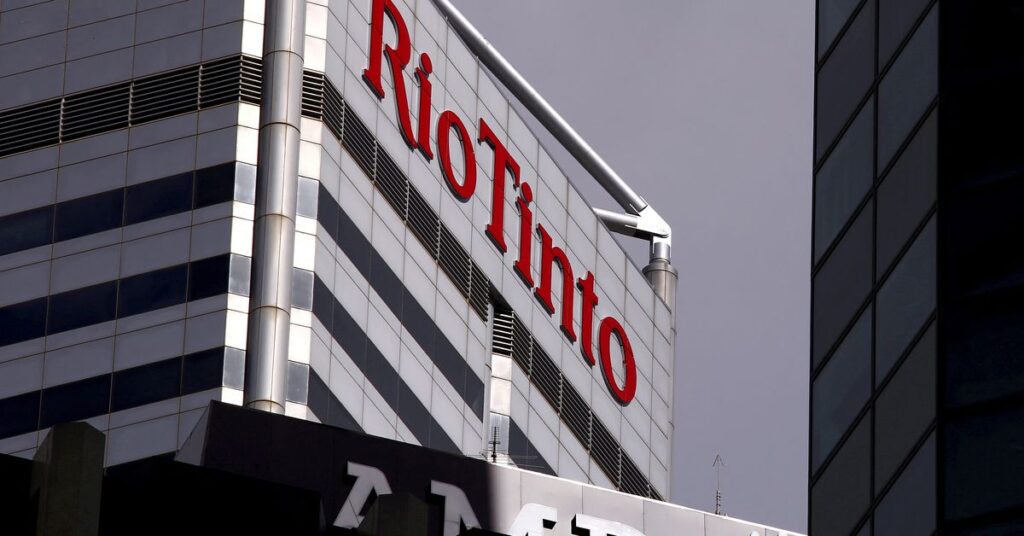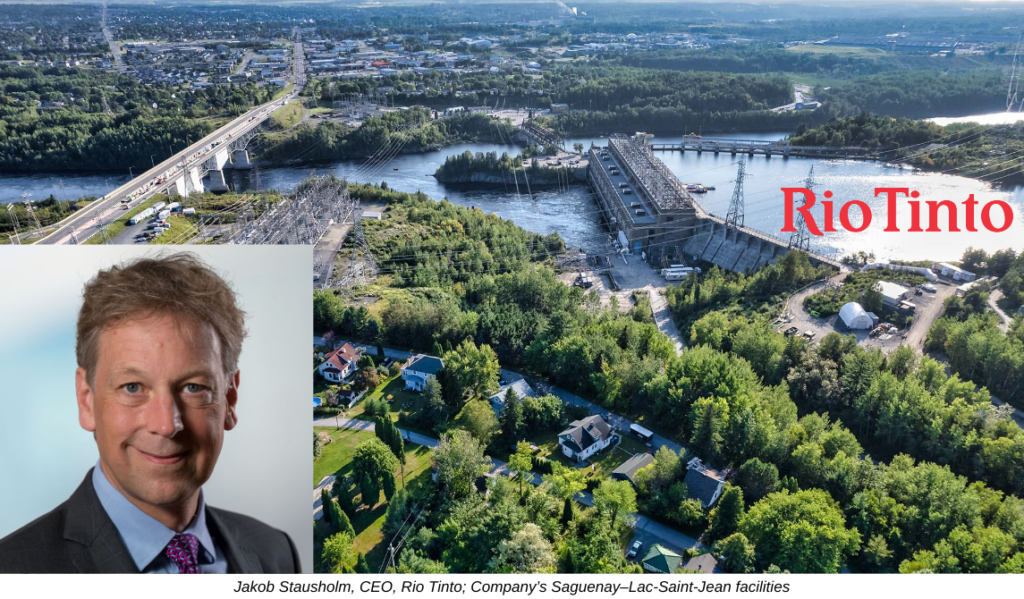Rio Tinto To Invest $1.1 Billion in Low-carbon Aluminium Smelter in Quebec

|
Listen to this story:
|
- The investment will add 96 new AP60 pots, increasing capacity by 160,000 metric tons of primary aluminum annually
- Enough aluminum for 400,000 electric cars
- Smelter is expected to fully ramp by the end of 2026
Rio Tinto will invest $1.1 billion (C$1.4 billion) to expand its state-of-the-art AP60 aluminium smelter equipped with low-carbon technology at Complexe Jonquière in Canada. The total investment includes up to $113 million (C$150 million) of financial support from the Quebec government. This expansion, which will coincide with the gradual closure of potrooms at the Arvida smelter on the same site, will enable Rio Tinto to continue meeting customers’ demand for low-carbon, high-quality aluminium for use in transportation, construction, electrical and consumer goods.
The investment will add 96 new AP60 pots, increasing capacity by approximately 160,000 metric tons of primary aluminium per year, enough for 400,000 electric cars. As a result, there will be a total of 134 AP60 pots and a capacity of approximately 220,000 tons per annum. Construction will run over two and a half years, with commissioning of the new pots expected to start in the first half of 2026 and the smelter fully ramped up by the end of 2026. Once completed, the expanded smelter is expected to be in the first quartile of the industry cost curve.
This new capacity will offset the 170,000 tonnes of capacity lost through the gradual closure of potrooms at the Arvida smelter from 2024. In addition, Rio Tinto will add 30,000 tons of new capacity through the commissioning of the previously announced recycling facility at Arvida in the first quarter of 2025. These facilities will ensure Rio Tinto’s casting facilities at Complexe Jonquière continue to provide value added products that meet customers’ needs, including integrating recycled post-consumer aluminium into primary aluminium alloys.
The AP60 smelting technology was developed by Rio Tinto’s Research and Development teams and is amongst the most efficient and lowest carbon technology currently available at commercial scale. When combined with the hydropower used at Rio Tinto’s operations in Canada, it generates one seventh of greenhouse gases per tonne of aluminium when compared with the industry average, and half the emissions when compared to the technology currently used at the Arvida smelter.

The project will generate up to 1,000 jobs during the peak of construction and approximately 100 permanent jobs will be maintained as a result of the expanded smelter./
Rio Tinto Chief Executive Jakob Stausholm said: “This investment is aligned with our strategy to decarbonise our value chains and grow in materials essential for the energy transition. Our AP60 technology is already proven and producing some of the lowest carbon aluminium in the world, thanks to the expertise of our highly qualified workforce and access to renewable hydropower. This is the most significant investment in our aluminium business for more than a decade and it will further strengthen Rio Tinto’s high-quality and low-carbon offering to our customers as they also work to reduce their own carbon footprint.
See related article: Volvo and Rio Tinto Partner for Low-Carbon Materials and Pilot Sustainable Autonomous Hauling Solutions
“I would like to thank both the Government of Canada and Government of Quebec for their support in progressing this project. We are also continuing to work together on the future implementation of the ELYSISTM zero carbon smelting technology at our Quebec facilities.”
Quebec Premier François Legault said: “A great momentum is building in our regions for our green economy. The aluminium industry in Saguenay-Lac-Saint-Jean has always been a real source of pride and has created considerable wealth in the region. Today’s announcement will breathe new life into this industry with greener, less polluting processes. The use of AP60 pots will halve GHG emissions in aluminium production. With the upcoming ELYSISTM technology, Quebec aims to become the world champion of green aluminum.”
The Honourable François-Philippe Champagne, Canada’s Minister of Innovation, Science and Industry, said: “Canada has all it takes to be the global green supplier of choice. And that is why our government is collaborating with key industry actors like Rio Tinto to produce the world’s greenest aluminium. By supporting the production of green metals, we ensure Canada will remain at the forefront of the economy of tomorrow. When economic benefits are paired with a commitment to developing green solutions, it’s a win for our industry, our cleantech ecosystem and our workers.”
In addition to this investment in low-carbon aluminium, Rio Tinto is working with the Governments of Canada and Quebec towards a deployment of the ELYSISTM zero carbon aluminium smelting technology at its Saguenay–Lac-Saint-Jean facilities. With the current development pathway, ELYSIS aims to have its technology available for installation from 2024 and the production of larger volumes of carbon-free aluminium approximately two years later.
Rio Tinto and the Government of Canada have also signed a Memorandum of Understanding that deepens their commitment to strengthen supply chains for low-carbon primary metals, critical minerals and other value-added products. The cooperation will also aim to support projects that have the potential to grow Rio Tinto’s activities in Canada, including the current and future decarbonisation of the aluminium supply chain.
The investment in the AP60 smelter is already included as replacement capital expenditure in Rio Tinto’s capital investment guidance for 2023 to 2025. The Group’s capital expenditure guidance of $9 billion to $10 billion in both 2024 and 2025 remains unchanged.










